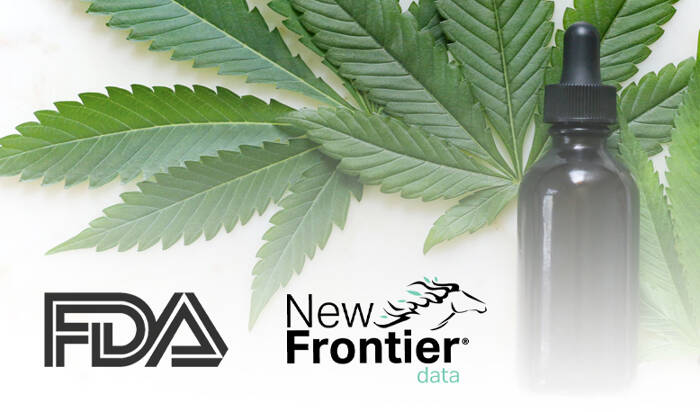Hemp Has Been Legal in the U.S. for Two Years. So Why Isn’t the Food Industry Selling It?
Sixteen states now allow CBD in the food products category regulated by the Food and Drug Administration (FDA), but that agency has yet to issue specific regulations. Its position is that it remains illegal to add CBDs to food, beverages or dietary supplements. And, in response, those 16 states have pushed the envelope.
So have smaller, more risk-tolerant companies preparing for the CBD market ahead. Larger CPG companies, meanwhile, have taken a position of wait and see.
Yet almost no one believes that that market won’t happen eventually (unless the FDA puts the brakes on). Reasons for this belief include the fact that:
- More than 3 in 5 (61%) of U.S. adults surveyed believe CBD has valid medical uses.
- Nearly 9 in 10 (86%) of U.S. adults have heard of CBD; 73 percent had had a conversation about it.
- More than half (56%) of CBD consumers in the survey have recommended CBD to an acquaintance.
These are some of the findings of a new report, from the Hemp Business Journal of New Frontier Data, available for purchase and scheduled to be discussed in depth at a free industry webinar happening Wednesday (June 24), the first of three such forums on hemp.
“The potential wellness value hemp may provide can no longer go unnoticed,” New Frontier Data founder and CEO Giadha DeCarcer says in a statement accompanying the new report. “The market value of cannabinoids will continue to grow as consumers’ access increases and the therapeutic value of minor cannabinoids such as CBN and CBG are better understood.”
(CBN and CBD are among the more important of the 118 cannabinoids and are not controlled substances in the United States.)
In the report itself, important takeaways include not only the impatience factor among small CBD companies even as demand grows but the tendency of smaller retailers, particularly in the natural foods and convenience store segments, to carry those products. Also noted is the need for brands to transition away from what the report calls a “one-size-fits-all” approach. Alternately, the report’s writers advise, brands’ strategy should be aimed at “discrete and specifically identified consumer groups.”
After all, the researchers say with their statistical evidence, consumers use CBD for a wide range of applications, from pain management to improving general wellness outcomes. Primary reasons for using CBD include pain management, 41%; unwinding (relaxation, relieving stress or anxiety reduction), 33%; promoting general wellness (including aiding sleep and boosting mood), 18%; and medical reasons. The stress of the current pandemic plays an important role as well.
So does age: 18-to-34-year-olds are more likely (23%) to have tried CBD than are 35-to-54-year-olds (21%). Only 14% of adults 55 and up have tried CBD, but older consumers tend to be more regimented in their use of CBDs, the report says.
Meanwhile, this interim period of wait-and-see for the FDA to act has brought forth unpopular rules from the U.S. Department of Agriculture. An example is the one requiring farmers to test their crops for THC potency 15 days before harvest at a Drug Enforcement Administration facility (a rule waived for the 2020 growing season due to events this year).
Different rules in different states have also caused widespread confusion.
And though legislation has been introduced in Congress – U.S. Rep. Collin Peterson, a Minnesota Democrat’s bill would amend federal rules to allow hemp-derived cannabinoids in food products – that effort is unlikely be acted upon in an election year.
The report (full title: “Risks and Opportunities in the Hemp-Cannabinoid Market”) also points to some cautionary points: Major bankruptcies in the CBD industry have occurred. And, because states have received many more grower than processor applications, the huge biomass that is sure to result has put downward price pressure on wholesale prices – despite the growing demand. The process capacity just isn’t there.
Therefore, the report concludes, “It is imperative that companies building processing capacity plan for where the industry is going, not where it currently is.”
In short, the subtext here seems to be, “Hold on. Things are going to take off. But just not yet.”




